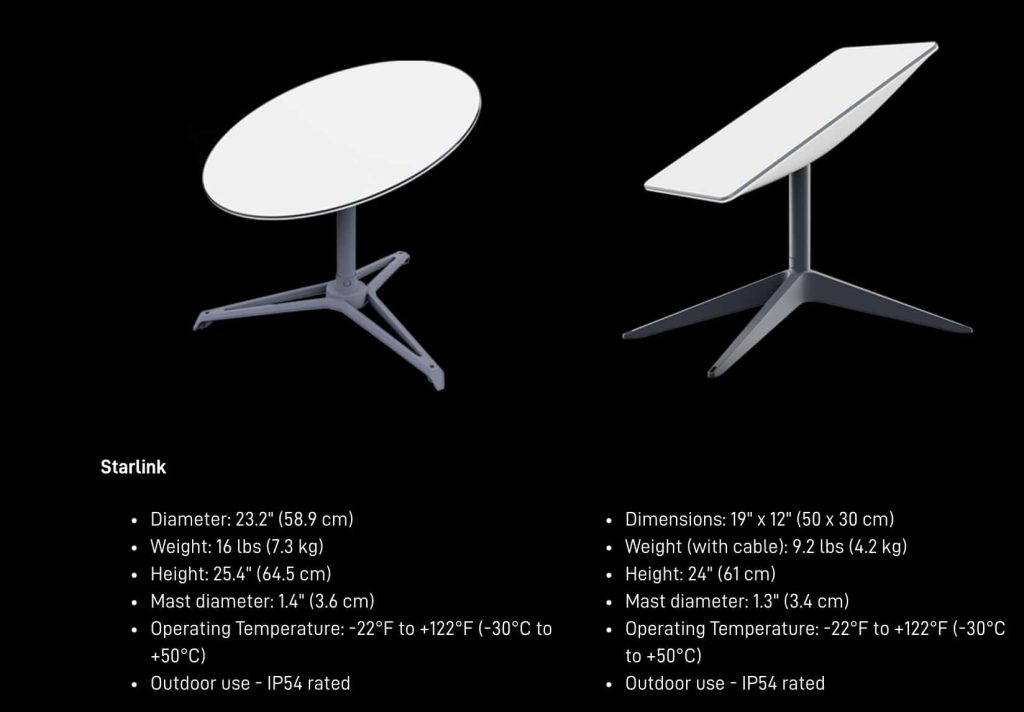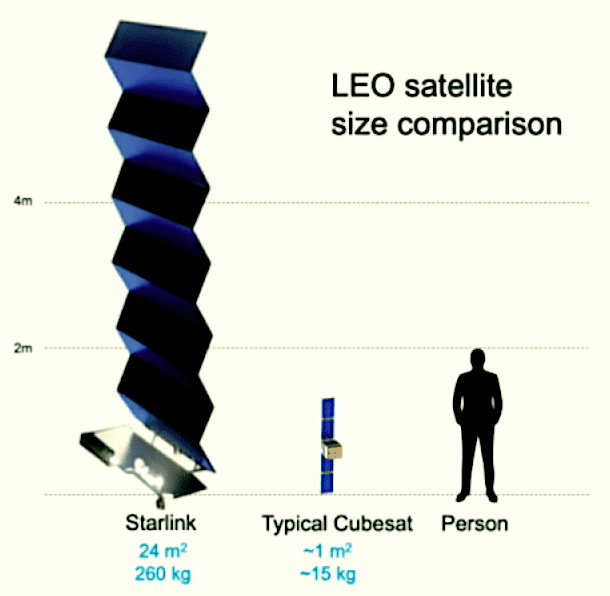Starlink is a satellite constellation system that targets to supply global internet coverage. This satellite constellation system is suited for rurally isolated areas where internet connectivity is not an option.
A SpaceX initiative to create a global broadband network, Starlink uses a constellation of low Earth orbit (LEO) satellites to provide high-speed internet services. Understanding the functionality and work mechanism of satellite internet, many may wonder what the size of these Starlink satellites is.
Starlink works on a satellite internet service technology that has existed for decades. Satellite systems use signals through a vacuum of space where ground stations broadcast signals to satellites which relay data back to Earth.
Each satellite in the Starlink constellation has a weight of 573 pounds and a flat body. One SpaceX Falcon 9 rocket fits up to 60 satellites. To better understand the size of Starlink satellites, below is a detailed description of these satellites.
Contents
Starlink Size
Starlink is an ambitious DIY-oriented satellite internet provider under the SpaceX company. Unlike most previous satellite internet systems that depend on just a handful of big satellites in fixed geostationary orbit 22,236 miles on the equator, Starlink uses a constellation of thousands of small low-earth-orbit (LEO) satellites. They are capable of achieving higher speeds and much lower latencies than traditional satellites are capable of. But what is the size of a Starlink dish?
Starlink currently has two generations of standard consumer hardware. A more advanced and expensive high-performance dish offered standard for business and maritime customers as an option for the residential and RV plans.
As of late 2021, the first-generation consumer hardware (a rounded dish with 2 design revisions) was retired and replaced with the second-generation rectangle hardware. Customers with first-generation hardware do not necessarily need to upgrade to the second-generation. Performance wise they should be equivalent.

First-Generation Dishes
The first-generation Dishy was presented from Starlink’s initial rollout in October 2020, when the second-generation version for new customers replaced it. The first-generation dish has the following specifics
- Measurements – 23.2 inches(58.9 cm) diameter
- Weight – 16 lbs (7.3 kg)
- Mast diameter – 1.4 inches (3.6 cm)
- Height – 25.4 inches (64.5 cm)
- Optimum Temperature: – 22°F to +122°F (-30°C to +50°C)
- Outdoor use: Yes, IP54 rated
- Mounting Options: included Tripod:
- Dimensions: length 11″ (28 cm), height 4″ (10 cm)
- Additional mounting options are available.
The first gen router has a single Ethernet port labeled AUX that may connect wired devices. The power supply is isolated from the Starlink Wi-Fi router. There are two nearly matching first-generation Starlink systems. The first units spaced out have a black mast leg, while the newer systems have a grey-colored leg. The only practical variation between these two generations is the power consumption.
Second-Gen Starlink Dishes
This second-generation Starlink receiver is rectangular and smaller than the first-generation dish. The dishy dimensions are 19″ x 12″, weighing nearly 7 lbs less than the original Dishy at 9.2 lbs. The smaller size and removable cable make it much easier to use Starlink in a portable fashion when you set up at each new location. The Dish Specs include the following:
- Dimensions: 19″ x 12″ (50 x 30 cm)
- Height: 24″ (61 cm)
- Mast diameter: 1.3″ (3.4 cm)
- Weight (with cable): 9.2 lbs (4.2 kg)
- Operating Temperature: -22°F to +122°F (-30°C to +50°C)
- Outdoor use: Yes, IP54 rated
- Mounting Options: Included Tripod:
- Dimensions: length 22″ (55 cm), width 12.9″ (32 cm), height 4.75″ (12 cm)
- Additional mounting options are available in the Starlink Shop.
Starlink Orbital Satellite Size

The Starlink satellite is a flat panel designed with a single solar panel with a mass of about 260 kg. The satellites are stacked for launch without needing a dispenser and use krypton-fueled Hall thrusters as a propulsion system for orbit adjustment, maintenance, and deorbiting.
The Startracker navigation system is based on the design of the Dragon. The satellites are designed autonomously to dodge collisions using uplinked tracking data. At the end of life, the Starlink satellites are to be actively deorbited, leading to reentry. 95% of the material is expected to burn up.
The first 1584 Starlink satellites are to operate from a 550 km orbit in planes inclined 53° to the equator. Later sub-constellations are planned for 1200 km and a low 340 km orbital altitude. This brings the final constellation magnitude to 12000 satellites. At the start of 2020, SpaceX requested to change the 1200 km constellation to operate from the 550 km orbit.
During the launching, 60 satellites are arranged on top of each other without needing a massive deployer. 60 satellites are the maximum possible to fit inside the Falcon-9, although future designs will allow launches of additional satellites permission. Satellites are also will be launched by the Super Heavy Starship launch spacecraft. The first prototype launch took place in May 2019 on a Falcon-9 booster with over 60 Starlink Block v0.9 prototype satellites for testing.
FAQs
The current versions of each satellite weigh approximately 573 lbs, approximately 260 kilograms.
Starlink satellites create a spectacular night sky view and are visible to the naked eye. They look like tiny lines of dots following each other in the sky.
The size of a single coverage cell is yet to be released, but the satellite’s measurements are 7 meters long, and the antennae would fold out to about 25 square meters.
Fiber is much faster than Starlink in both median speed and upload and download speeds.
The Starlink dish antennae measure about 20.25 inches long by 12.0 inches wide.
The gen 1 Starlink satellite is 2.8 meters long by 1.4 meters wide, while the Gen 2 is more than double the Gen 2 In length and width.
Conclusion
Starlink, the satellite internet provider of Elon Musk’s rocket company SpaceX, has developed a second generation of satellites. The Gen2 satellite is larger than the 2,500 Starlink satellites orbiting 340 miles above the Earth’s surface. Gen2 satellites have 22 feet long and weigh a total of 2,755 pounds, the SpaceX CEO said.
Starlink are generally large-bodied hence making them visible from the ground. The larger the size, the bigger the coverage though size limits the number of satellites launched into space by SpaceX rockets. You can check Starlink availability in your area.
